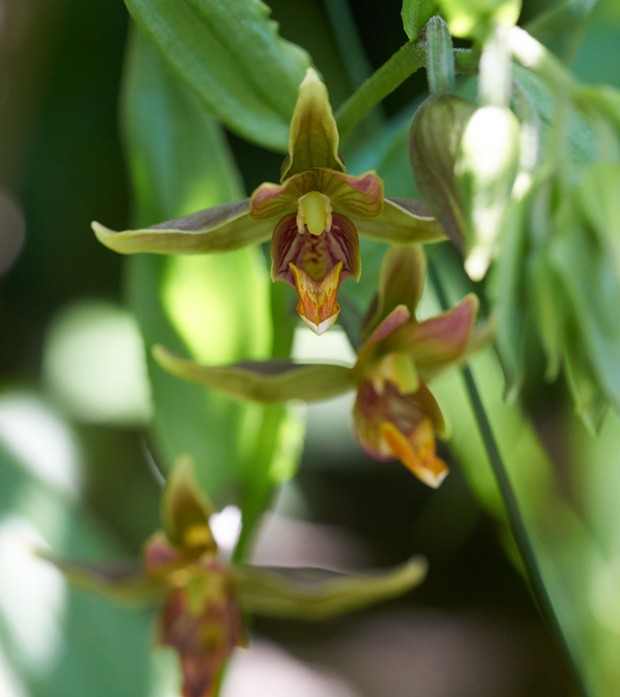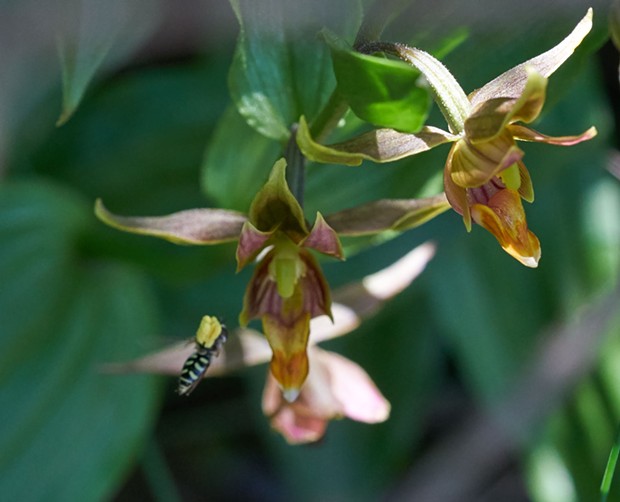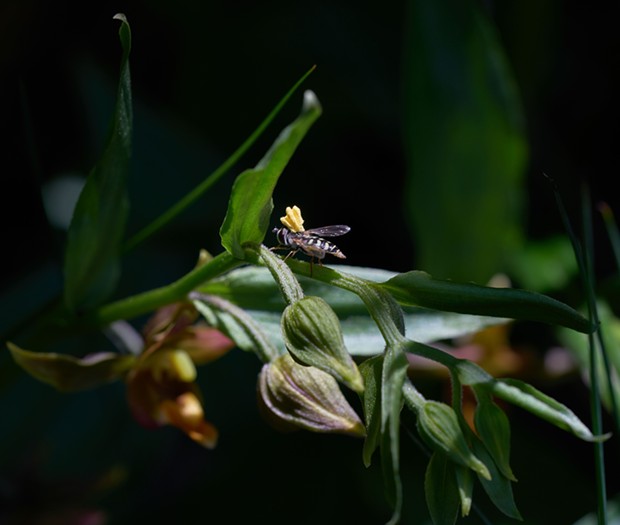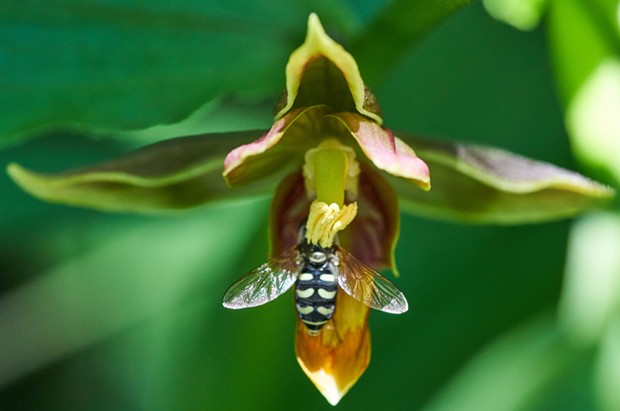HumBug: Clever Orchids
By Jennifer Fumiko Cahill [email protected] @jfumikocahill and Anthony Westkamper[
{
"name": "Top Stories Video Pair",
"insertPoint": "7",
"component": "17087298",
"parentWrapperClass": "fdn-ads-inline-content-block",
"requiredCountToDisplay": "1"
}
]
Today I was discouraged that there were a lot of people down along “my” stretch of the river. They stir up the bugs, making getting good shots difficult. Sure enough, although I saw several dragonflies, none seemed in the mood to pose, so I walked near the outer edge of the riverbed where the trees overshadow the rocks. I was delighted to spot the locally common chatterbox orchids (Epipactis gigantea) blooming in the seeps where I see them every year. A quick movement caught my eye. It was a common hoverfly with something large and bright yellow attached to its back. As I took photos of the insect serially visiting the blossoms it dawned on me.
Orchids sport some of the most highly developed flowers in the plant kingdom. Some tropical species go so far as to emulate the scent and female genitalia of certain species of moth, inducing the males to mate with the flower thereby carrying pollen from one bloom to another. Whenever I see an orchid in the wild I wonder what its specific adaptation might be.
I have never seen any reference to this particular species' of orchid and an insect pollinator. Apparently, the flower glues its pollen producing organ to the back of the bug which then flies from plant to plant carrying the entire mass with it and rubbing against the flower's appropriate “lady parts.”
All of this brings to mind that the entire evolution of flowers was for plants to take advantage of the mobility of animals, namely insects, to accomplish a more efficient pollinating process. One only has to look at the prodigious pollen production of pines in the spring to see how wasteful the broadcast system is. There would appear to be only one organism even more efficient at pollination than insects: Human pollination works exceedingly well for roses, petunias, tulips and, yes, orchids. The natural world's penultimate pollinator may well be people — just like the hoverfly, we're doing the plant's work when we propagate them.
Speaking of...
-
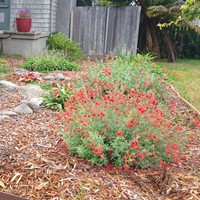
Equinoctial To-Do and Native Plants
Sep 21, 2023 -
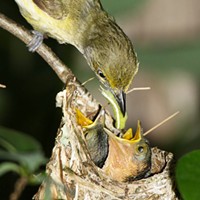
Gardening for Caterpillars?
Dec 15, 2022 -
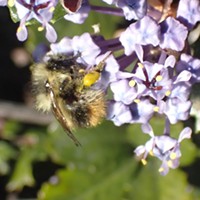
HumBug: Early Spring Pollinators
Apr 12, 2020 - More »
More by Jennifer Fumiko Cahill
-
Hole Food
- Apr 27, 2024
-
SCOTUS on the Homeless, CPH Protest and Local Entertainment
- Apr 26, 2024
-
Look Up for Rooftop Sushi
- Apr 19, 2024
- More »
More by Anthony Westkamper
-
HumBug: Early Spring Pollinators
- Apr 12, 2020
-
HumBug: A Recipe for History
- Apr 5, 2020
-
HumBug: Bugs in the City
- Mar 29, 2020
- More »
